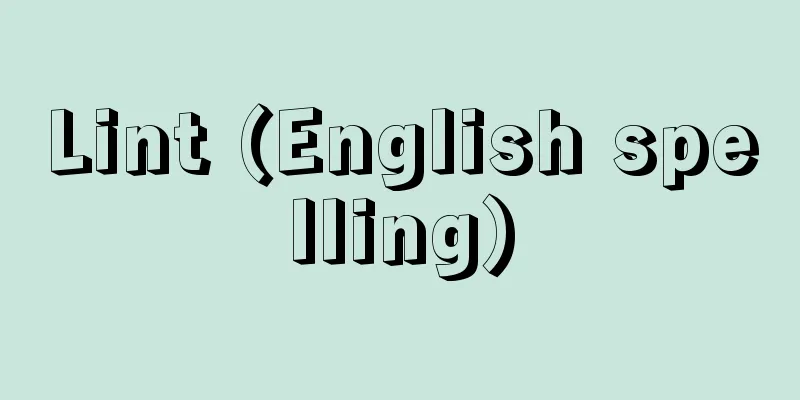Suwa Taisha Shrine

|
Kamisha and Shimosha are located on the north and south sides of Lake Suwa in Nagano Prefecture. Kamisha is divided into Honmiya (Nakasu, Suwa City; the main shrine is a nationally important cultural property) and Maemiya (Miyagawa, Chino City), while Shimosha is divided into Harumiya and Akimiya (both are located in Shimosuwa-cho, Suwa-gun, 1 km apart), and the four shrines are collectively called Suwa Taisha. The deities enshrined at Kamisha are Takeminakata-no-kami and his wife Yasakatome-no-kami, while Shimosha enshrines the two deities as well as their elder brother Yaekotoshiro-nushi-no-kami, but generally, the belief in a male deity at Kamisha and a female deity at Shimosha has been passed down since ancient times. At Shimosha, the deity is alternately enshrined in the Spring Shrine from February 1st to July 31st, and in the Autumn Shrine from August 1st to January 31st of the following year, so a transfer ceremony is held every six months. Takeminakata no Kami is the second child of the father god Oonamuchi no Mikoto and mother goddess Koshinunakawahime no Mikoto, and according to the Kojiki, he resisted alone when an envoy from Takamagahara requested that he hand over the country, and fled to Suwanoumi in Shinano Province, where he was given a fief. The founding of the shrine is unclear, but it is listed in the Engishiki Shinmeicho (Book of Shinto Shrines) as "Minakatatomi Shrine Niza", and is an ancient shrine considered to be a Myojin Taisha (Great Shrine of the Gods). It is also considered the Ichinomiya (Ichinomiya) of Shinano Province, and has been worshipped and revered by both the court and the public as a god of hunting, agriculture, and war. In the Middle Ages, the Ohoori Suwa clan, a priest, allied with the Minamoto and Hojo clans and formed a major political force. During the Sengoku period, it was placed under the protection of the Takeda clan. It is the main shrine of over 10,000 Suwa shrines nationwide, and in the Edo period it was awarded a shrine territory of 1,500 koku. It was a former government-sponsored grand shrine. The former head priest's family was called the Ohoori Suwa, and the descendants of the gods were hereditary, and the magistrate Yajima clan's distant ancestor is the mother goddess Takashinumakawahime. The annual festivals are held at Kamisha on April 15th and Shimosha on August 1st. The Kamisha annual festival is a special ritual called the Ontosai, which is said to have been an ancient ceremony in which 75 deer heads were offered to the deity. The Shimosha annual festival is also called the Ofunematsuri, and is held at Akimiya following the enshrinement ceremony. Other major rituals include the Frog Hunting and Divination Ritual (Kamisha, January 1st), the Tsutsugayu Ritual (Shimosha, January 15th), the Rice Planting Ritual (Shimosha, June 30th), the Misayama Festival (Kamisha and Shimosha, August 26th to 28th), and the Onbashira Festival. Among these, the Shikinen Soei Onbashira Festival, held once every seven years in the year of the tiger (monkey), is an event in which the shrine's four pillars are replaced with new ones. In particular, the pulling of the Onbashira is famous as a dynamic and heroic event in which more than 1,000 parishioners pull the pillars while singing unique lumberjack songs. Lake Suwa's "Omiwatari" is a natural phenomenon on the surface of the lake, located at an altitude of 759 meters above sea level, which is believed to be a trace of the divine spirit passing through. The frozen surface of the lake cools rapidly at night, contracting and creating cracks, and new ice fills the gaps and expands during the day, pushing it up, creating a path on the ice. [Toshihiko Uda] "Study of Suwa Shrine" by Naokazu Miyaji, Vol. 1 and 2 (1931, 1937, Kokin Shoin) " "Suwa Taisha" by Iwane Miwa (1978, Gakuseisha) [Reference] | |Source: Shogakukan Encyclopedia Nipponica About Encyclopedia Nipponica Information | Legend |
|
長野県の諏訪湖を隔てて南北に上社(かみしゃ)・下社(しもしゃ)が鎮座。上社は本宮(ほんみや)(諏訪市中洲(なかす)、社殿は国重要文化財)と前(まえ)宮(茅野(ちの)市宮川)に、下社は春宮と秋宮(両宮とも諏訪郡下諏訪町、1キロメートル離れて鎮座)に分かれ、四宮をあわせて諏訪大社と称する。祭神は、上社には建御名方神(たけみなかたのかみ)、妃神(きさきがみ)の八坂刀売(やさかとめ)神を祀(まつ)り、下社には二神のほかに兄神の八重事代主(やえことしろぬし)神を配祀(はいし)するが、一般には古くから上社に男神、下社に女神の信仰が伝わっている。下社では祭神が2月1日から7月31日まで春宮に、8月1日から翌年1月31日まで秋宮に交互に鎮座されるため、半年ごとに遷座祭が行われる。建御名方神は父神大己貴命(おおなむちのみこと)、母神高志沼河比売命(こしぬなかわひめのみこと)の第2子で、『古事記』によれば、高天原(たかまがはら)使者の国譲りの要請に1人抵抗して科野国洲羽海(しなののくにすわのうみ)に逃れて、封ぜられたとある。神社の創建は明らかではないが、『延喜式(えんぎしき)』神名帳に「南方刀美(みなかたとみ)神社二座」とあって名神(みょうじん)大社とされる古社で、また信濃(しなの)国一宮(いちのみや)とされ、狩猟神、農業神、武神として朝野の信仰崇敬を集めてきた。中世には、神官の大祝(おおほうり)諏訪氏が源氏、北条氏と結び、政治的にも大きな勢力を形成。戦国時代には、武田氏の保護のもとに置かれた。全国1万余に上る諏訪社の本祠(ほんし)であり、江戸時代には社領1500石を授かった。旧官幣大社。旧神主家は諏訪の大祝と称し神裔(しんえい)が世襲し、奉行(ぶぎょう)職の矢嶋(やじま)氏は母神高志沼河比売命を遠祖とする。 例祭は上社4月15日、下社8月1日。上社例祭は御頭祭(おんとうさい)と称する特殊神事で、昔は鹿(しか)の頭75個を神供とする古式祭であったという。下社例祭は御船祭(おふねまつり)ともよばれ、遷座祭に引き続いて秋宮で行われる。そのほか主要神事に蛙狩並御占(かわずがりならびにおうら)神事(上社、1月1日)、筒粥(つつがゆ)神事(下社、1月15日)、御田植(おたうえ)神事(下社、6月30日)、御射山(みさやま)祭(上社・下社、8月26~28日)、御柱(おんばしら)祭などがある。なかでも7年に一度、寅(とら)年と申(さる)年に行われる式年造営の御柱祭は社殿の四方の柱を新しく建て替える行事で、とくに御柱の曳(ひ)き建ては、独特の木遣(きやり)唄とともに1000人余の氏子が曳行(えいこう)する豪快勇壮な行事として名高い。 諏訪湖の「御神渡(おみわたり)」は、海抜759メートルの高地にある湖面の自然現象を神霊渡御の跡として信仰したもので、湖面の結氷が夜間急激に冷え、収縮して裂け目を生じ、そのすきまに新しく結氷したものが昼間膨張して押し上げられ、氷上に道をつくる現象である。 [菟田俊彦] 『宮地直一著『諏訪神社の研究』上下(1931、1937・古今書院)』▽『三輪磐根著『諏訪大社』(1978・学生社)』 [参照項目] | |出典 小学館 日本大百科全書(ニッポニカ)日本大百科全書(ニッポニカ)について 情報 | 凡例 |
<<: Suwa Daimyojin Paintings - Suwa Daimyojin Paintings
Recommend
Pseudo-amenorrhea
...Ovarian wedge resection is effective (75-90%)....
Broel
Dutch mathematician. Professor at the University o...
Defect - Kashi
Generally speaking, it refers to a flaw or defect...
Kusano
Ichibacho is a former post town in the eastern pa...
Listed Plateau - Uwabadaiichi
A hilly plateau of basalt rocks spreads across th...
Ranzania japonica (T.Ito ex Maxim.) T.Ito
It is also known as Togakushi Shouma (illustration...
Sarakēnoi (English spelling)
…the name used for Muslims in Europe, especially ...
Fukui Cave - Fukui Cave
A small sandstone cave in Yoshii-machi, Nagasaki P...
Kagawa Prefecture
A prefecture in the northeast of Shikoku, facing t...
Epidonia - Epidonia
A moss in the family Erigeronaceae (illustration)....
Gabinius, Aulus
[raw]? Died 47 BC, Salonae. Roman statesman. Tribu...
Bull's Eye
...In Japan, the name "Atoboshi" is kno...
Uracil
...In DNA, the sugar moiety is 2-deoxy-D-ribose, ...
External auditory canal
...the correct anatomical name is the pinna ('...
hypochondria
…It is also called hypochondria. The Greek word h...









